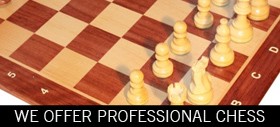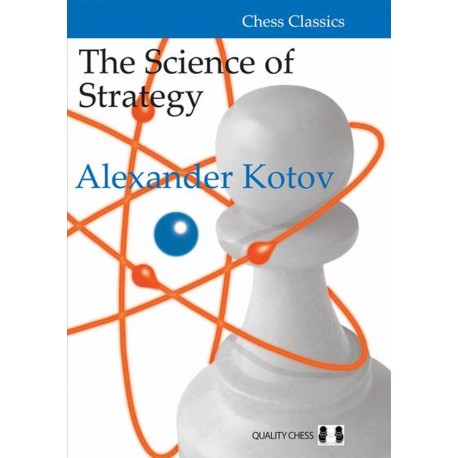No products
The Science of Strategy by Alexander Kotov (K-5636)
K-5636
New product
Chess is a strategically deep game and it is no surprise that players often struggle to find the right strategy over the board. Computers may be able to show a good move in a position, but they can’t explain how it should fit into an overall plan.
- Write a review
Data sheet
| Language versions | English |
| Author / Authors | Alexander Kotov / Александр Котов |
| Publisher | Quality Chess |
| Year of Publication | 1st edition 2019 |
| Pages | 240 |
| ISBN | 978-1-78483-079-3 |
| Hardcover | No |
| Paperback | Yes |
| Downloadable | No |
| Width | 17 cm / 6.69 inch |
| Height | 24 cm / 9.45 inch |
More info
In The Science of Strategy, Alexander Kotov takes a methodical approach to this mysterious subject, breaking it down into clear themes. He starts with the crucial role of the pawn in chess, before systematically discussing a series of key strategic elements to complete the overall picture. Finally, building on what has gone before, one of the most difficult aspects of chess is discussed: the ability to evaluate a position and conceive a plan on the basis of this evaluation.
Kotov’s clear and methodical style makes this book an ideal guide to chess strategy. He describes the chess in words rather than relying overmuch on variations, and illustrates his ideas in insightfully annotated positional games, with the likes of Alekhine, Botvinnik and Karpov featuring heavily.
Alexander Kotov was a formidable grandmaster of the Soviet school. He was the 1948 Soviet Champion (jointly with Bronstein), and a member of the USSR gold-medal-winning team at the 1952 and 1954 Olympiads. He is also renowned as a chess author, most famously for Think Like a Grandmaster.
Reviews

Contents
003 Publisher’s Foreword
006 Preface
007 1. The Pawn - Its Strength and Weakness
008 Pawn structure in the centre
008 Closed centre
020 Open centre
026 Mobile centre
050 Fixed centre
072 Volatile centre
095 2. Attack in the Centre and on the Queenside
095 Characteristics of central and queenside attacks
097 Attacking with pieces
106 Pawn offensives
111 Open files
123 Pawn sacrifices for opening files
129 Other typical methods of attack
137 Transferring the attack from one wing to the other
143 3. Play on Both Wings
158 Tacking to and fro
167 4. Defence and Counterattack
167 Sense of danger
172 Creating maximum difficulties
175 Transition to the endgame
178 Removing the king from the danger zone
182 Counterattack
187 5. Manoeuvring
197 6. “Simple” Situations
198 Simple situations of the endgame type
201 Simple situations of the combinative type
207 7. Major Piece Endings
213 8. Positional Evaluation - Planning
215 Unified plan
225 Creative thinking
235 Game Index
237 Index of Openings
238 Name Index











